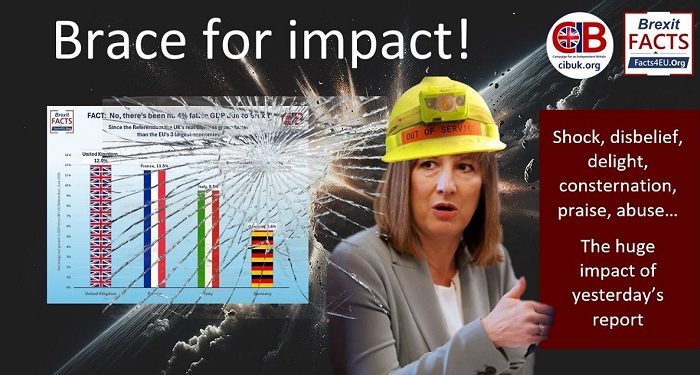The Euro – Doomed to Fail in the Beginning
Before deciding whether the UK should join the Euro the then Chancellor of the Exchequer, Gordon Brown, drew up 5 economic tests which the UK must pass for the UK to join. However the 5 tests were superfluous. They ignored the one defining test that was of far greater significance than all of the rest put together and that one thing that doomed the Euro to failure from the start.
That was the growth of Unit Labour Costs throughout the Eurozone. Without that being the same, high levels of unemployment were bound to come about in some EU countries and that is what we are seeing in Portugal, Italy, Greece and Spain already.
Let me explain what I mean by Unit Labour Costs. Simply put it is the labour cost of producing one item of something. Let’s say in a very simple economy you employ me to produce glass tumblers. You pay me £10 per hour and I produce 10 tumblers an hour. The unit labour cost is £1 per tumbler. In another country, let’s say they produce salt cellars. There they pay their workers €10 per hour and they produce 10 salt cellars per hour. The unit labour cost of one salt cellar is €1. So in this simple example, the terms of trade are equal and £1 will equal €1.
If my wages were increased to £11 per hour and but my output remained at 10 tumblers per hour. The unit labour cost is now £1.10 each. If our neighbours increased their wages to €11 per hour and increased their output to 11 salt cellars, their unit labour cost remains €1.00 per unit. The terms of trade are now against us. More £s leave our banks than the €s that are coming in because we now sell less of our products.
Under the laws of supply and demand the exchange rate of our currency would fall. In this simple example it would fall by 10%, bringing the terms of trade back into balance and trade carries on as it did before. This is how countries, like us, for decades have been able to increase the wages to our workers faster than their output has increased. The £ fell in value from around $4 to the £1 in the 1950s to about $1.50 now.
Unit labour cost is a factor of wages paid and productivity, but productivity itself among other things is dependent on the amount of capital invested in each worker and climate. Capital because if you have been given a new machine and I am producing solely by hand you will produce a lot more than I would. Climate because it is much easier to work in the fairly temperate northern Europe than it is in the
hot South, where it is often too hot to work in the afternoon.
For a single currency area to work, unit labour costs have to increase at the same rate in each country all of the time, but that is impossible.
Assuming that the European Commission can do nothing to change the climate, though it does seem to be trying very hard to, I’ll concentrate on capital. The amount of capital invested per worker would have to be the same in every country and increase at the same rate so there would have to be an ABSOLUTELY MASSIVE transfer of capital from the industrialised northern countries to the more impoverished southern and eastern ones. It had never occurred to me until now that the European Commission would deal with this in an altogether different way – move large numbers of people from the East to the West.
So what will be the effect of unit labour prices rising faster in some countries than others? Quite simply it will be loss of exports and jobs in the poorer performing ones, which is what we have seen in recent years. Unemployment rises, the government’s tax receipts fall because there are fewer people in work, welfare spending goes up because there are more unemployed and all of a sudden the government has to borrow large sums of money to keep going and in its turn faces bankruptcy.
The solution to the problem for an independent state, as Argentina did a few years ago, is to default on your debts, reduce interest rates and devalue your currency. These three things are done together and the economy goes through a dramatic recovery. Unfortunately these solutions are not available to the countries in the Eurozone.
Instead the European Commission has imposed austerity measures on the southern European states, putting up taxes and reducing government spending which actually makes the situation worse by creating more unemployment. Incredibly, to try to bring unit labour costs down, they are actually reducing the wages paid to workers. Even if by some miracle this reduction in wages brought them back to parity with Northern Europe it would be a fleeting solution only as in the very next day, unit labour costs would change by different amounts in different countries and we’d be back on the same path to disaster again.
If Portugal, Italy, Greece and Spain had kept their own currencies they would been able to devalue them over the years allowing them to remain solvent. Instead the EU’s great vanity project, the Euro, has been imposed on them and maintained at extraordinary costs to their people.









